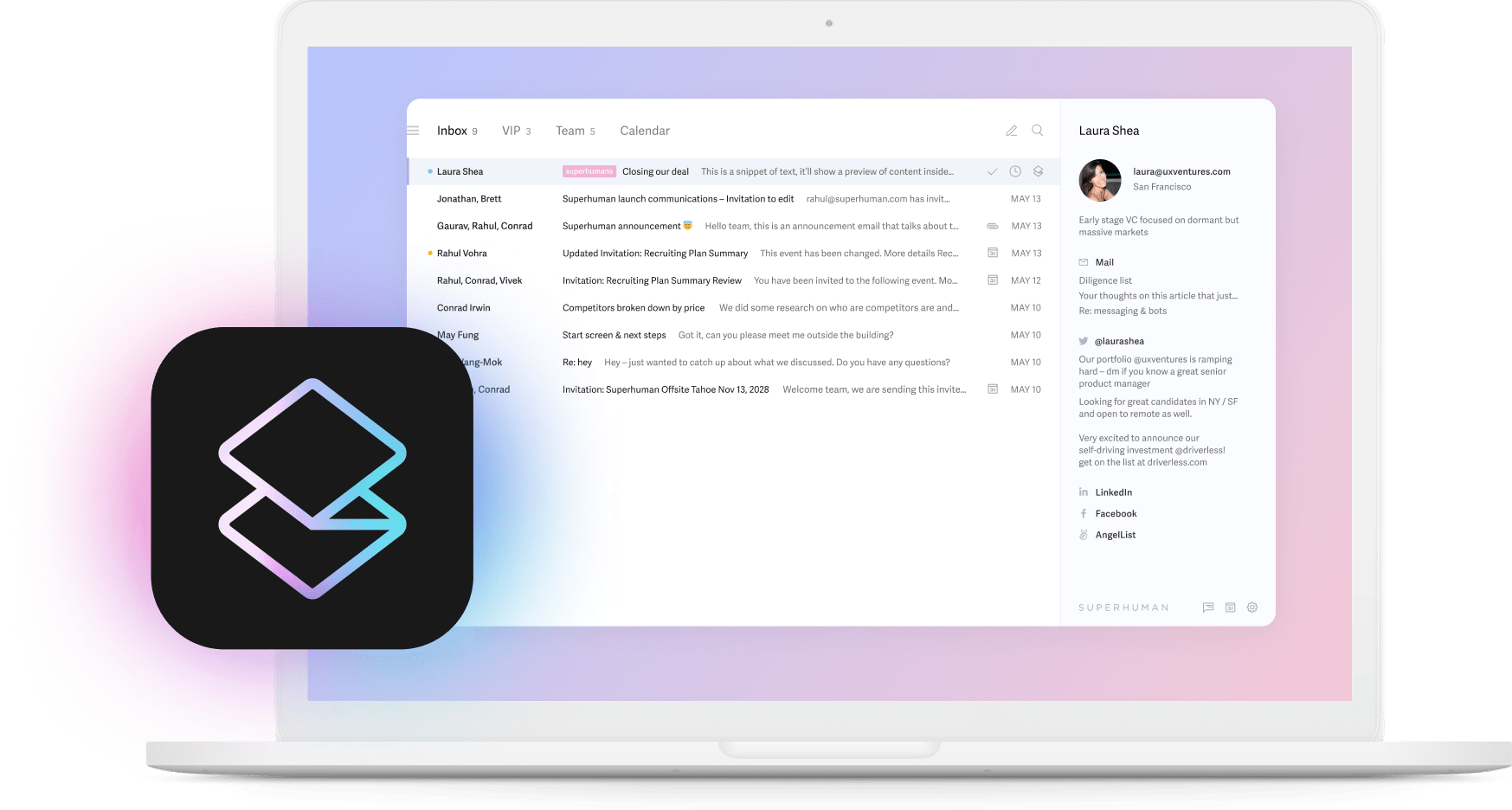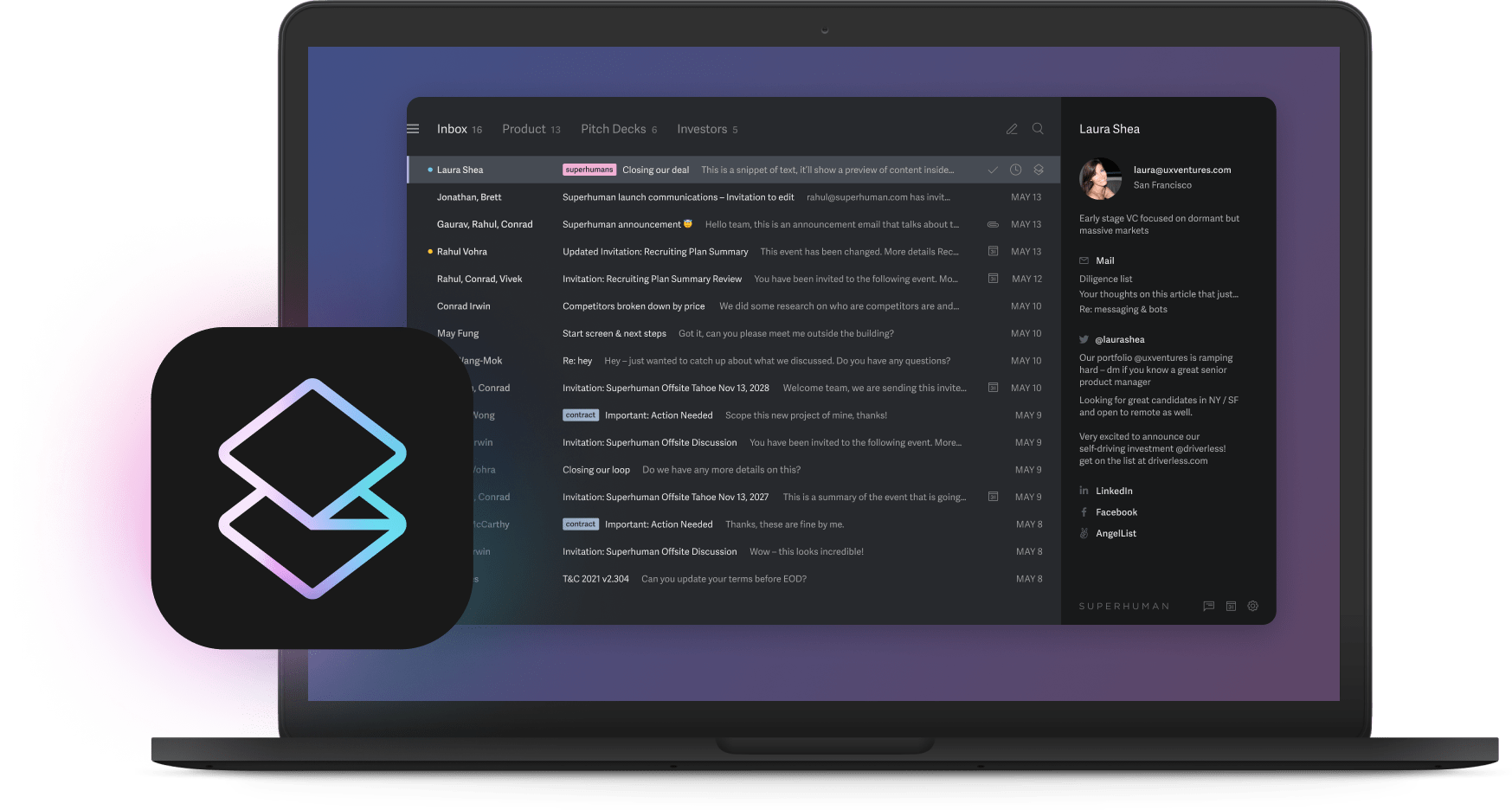
It's easy to spend hours each day crafting emails, trying to find just the right words. The average professional spends 28% of their workday on email. That's over 11 hours weekly managing messages that could be spent on other priorities.
What if you could get those hours back? AI-powered writing tools are transforming how we craft, manage, and optimize our emails. Whether your inbox feels overwhelming or you simply want more impactful messages, these tools can change your relationship with email for the better.
If you need help writing an email, this guide will help you craft the perfect message and measure its impact, all while keeping your authentic voice.
Understanding effective email communication
The anatomy of a successful email
Have you ever received an email that made you think, "Wow, this person gets it"? Those emails follow a clear structure that respects your time while delivering exactly what you need to know.
Your subject line works like a newspaper headline, determining whether your email gets opened or forgotten. 35% of email recipients open emails based on the subject line alone.
Your opening should quickly establish why this matters to the reader. If you're connecting for the first time, knowing how to introduce yourself in an email makes all the difference. Skip the warm-up and get to the point. Leading with your main request helps busy professionals understand why they should keep reading.
The body of your email should be scannable and concise. Break information into short paragraphs or bullet points, providing just enough context for the reader to understand.
Your closing should include a specific call to action that makes next steps crystal clear. "Let me know your thoughts" leaves things hanging, while "Can you approve this proposal by Thursday at 3pm?" creates momentum.
Email tone and context
The most effective emails match their tone to both the recipient and the situation. This awareness builds stronger professional relationships.
Your relationship with the recipient should guide your level of formality. Matching your communication style to existing relationship dynamics increases your response rates.
Cultural differences play a huge role too. What sounds efficient in some cultures may come across as too direct in others. For international communication, starting with greater formality typically works better.
The purpose of your email — whether making a request, sharing information, or working through a challenge — should shape your approach. Different goals need different structures to get the best results.
Best practices for emails
Subject line
Crafting effective email subject lines is crucial for getting your message opened. Great subject lines are specific, relevant, and create just the right sense of urgency.
For action-oriented emails, start with verbs that make the needed action clear: "Review proposal for Thursday meeting" works better than "Thursday meeting." For time-sensitive matters, include clear timeframes: "Input needed by EOD Tuesday."
Keep subject lines under 50 characters when possible. Subject lines between 36-50 characters typically earn the highest open rates.
Make sure your subject line reflects what's actually in your email. Trust builds when your content delivers exactly what the subject line promised.
Tone and formality guidelines
Finding the right tone means balancing professionalism with your authentic self. Too formal feels distant, while too casual might not command attention.
Match your formality to your existing relationship and your recipient's communication style. When unsure, start slightly more formal. You can always become more conversational later.
Save humor for when you know your audience well. Humor can strengthen established relationships, but it works best when you already have rapport.
Structuring body text
Start with your main point rather than building up to it. This "inverted pyramid" approach from journalism, as described in email layout best practices, helps readers who might only skim your message.
Use short paragraphs of 3-5 lines maximum. Shorter text blocks get more attention in digital reading.
For complex information, use bulleted or numbered lists. Utilizing a formal email template can help ensure your email is well-structured and professional.
Effective CTA and closing
End your emails with clarity about what happens next. Clear closings create action; vague ones create confusion.
Make your call to action explicit: "Please confirm if Tuesday at 2pm works for this discussion" rather than "Let me know when you're free to chat."
When appropriate, include a clear timeframe for the requested response. Specific timeframes significantly increase follow-through rates.
Email signature essentials
Your email signature serves as your digital business card. It should provide necessary contact information while reinforcing your professional identity.
Include your name, title, company, phone number, and relevant social profiles. For international communication, consider adding your time zone.
Keep signatures clean and professional. Simple signatures look better on different devices and keep the focus on your message.
Tone and context considerations
Adapting communication styles
When emailing executives, brevity becomes your best friend. Messages to senior leaders should lead with conclusions and recommendations, with supporting details available but not front and center.
For technical audiences, precision matters more than brevity. When sharing complex information, provide specific details and avoid ambiguity that could create misunderstandings.
Global business communication
Direct communication styles common in American business culture may feel different in countries that value relationship-building. Acknowledging relationships before making requests can significantly improve outcomes in many cultures.
When writing to non-native English speakers, simplify sentence structure and avoid idioms. When communicating globally, use shorter sentences and more straightforward vocabulary.
Signaling urgency
To signal genuine urgency, be specific about timeframes and context: "We need your input by Wednesday to include these changes in Friday's release" rather than "URGENT: Input needed."
For truly time-critical matters, consider whether email is the right channel. For genuinely urgent matters, real-time channels like phone or messaging often work better than email.
Maintaining brand voice
Develop internal guidelines for email communication that reflect your organization's values and personality. These guidelines should address formality level, response time expectations, and common phrases that reinforce your brand identity.
AI-Powered email writing solutions
AI is making email management faster and more effective. With the help of advanced email productivity apps and AI email responders, you can transform your email workflow.
How AI tools transform email writing
AI-powered email tools address the core challenges that make email management difficult: volume, quality, and response management. For more in-depth insights, check out this AI email writing guide.
Modern AI writing assistants do far more than spelling and grammar correction. They can suggest entire responses using an AI email generator, maintain consistent tone, identify priority messages, and help schedule follow-ups.
Superhuman: revolutionizing email productivity
Superhuman shows the transformative potential of AI in email management. Its Split Inbox feature uses AI to sort messages by importance, ensuring critical communications stand out.
Superhuman AI assists in writing full emails from simple phrases & maintains a consistent personal tone by learning from your past email patterns. Superhuman users save an average of 4 hours per week — essentially giving you back half a workday.
For teams, features like Team Snippets & Shared Conversations enable cross-functional alignment right from Superhuman, transforming email from an individual tool into a strategic business intelligence platform. With Instant Reply & Auto-Summarize, you'll see email threads quickly summarized for faster understanding. Want to learn more? See why many consider Superhuman the best AI email platform available today.
Try SuperhumanEvolution of AI writing tools
The journey from basic spell-checkers to sophisticated AI writing assistants reflects the amazing advancement of natural language processing technology.
Early tools like grammar checkers addressed surface-level writing issues. Today's AI writing assistants can generate complete responses based on message context, previous correspondence, and organizational communication patterns.
The latest generation of AI email tools, powered by large language models like GPT-4, can understand nuance, maintain consistent tone, and adapt to different recipients and contexts.
Choosing the right AI email assistant
Finding the perfect AI email assistant depends on your specific needs, workflow, and communication volume.
For high-volume email users, email management tools like Superhuman offer comprehensive solutions with advanced AI features for managing large volumes of messages.
For improving writing quality rather than email management, Grammarly Business provides sophisticated tone adjustment, clarity improvements, and brand voice consistency.
Budget-conscious users can start with free offerings like Gmail's Smart Compose or Microsoft Editor, which provide basic AI assistance without additional cost.
Practical applications
AI-powered email tools shine in specific professional scenarios where communication quality directly impacts outcomes. They can help you efficiently manage your email inbox, ensuring important messages are addressed promptly and enabling you to turn emails into tasks.
High-Stakes email scenarios
For job applications and professional networking, AI tools can help refine your message's impact. Communication quality significantly influences hiring managers' perceptions.
When handling client communications, AI assistants help maintain a consistent professional tone even when responding to challenging situations. This consistency strengthens client relationships and brand perception.
For sales communications, AI can help personalize outreach at scale while maintaining quality. Personalized emails improve conversion rates by an average of 26%.
Industry-specific email communication
In legal settings, precision and compliance matter tremendously. AI tools that help maintain factual accuracy while adhering to regulatory requirements can reduce risk and save review time.
Healthcare professionals benefit from AI that ensures patient communications are both compliant with privacy regulations and clearly understood by patients with varying health literacy levels.
For marketing professionals, AI email tools that optimize subject lines and content for engagement provide measurable performance improvements across campaigns.
Mastering AI-assisted email writing
Implementation guide
Start with a specific goal — whether that's response speed, writing quality, or inbox management. Focused implementation leads to better long-term results than trying to change everything at once.
Test your chosen tool with a subset of communications before full implementation. This allows you to measure impact and identify any adjustments to settings or usage patterns.
Develop clear guidelines for when to accept, modify, or override AI suggestions. The most effective users maintain final judgment over AI outputs rather than accepting all suggestions automatically.
Advanced techniques
Create templates for recurring communication scenarios that you can customize with AI assistance. This hybrid approach maintains consistency while allowing personalization where it matters most.
Implement advanced filtering and prioritization rules that work alongside AI suggestions to create a truly customized workflow. The combination of explicit rules and AI-driven suggestions creates more nuanced results than either approach alone.
For teams, establish shared language models and communication guidelines that AI tools can reference. This ensures organizational consistency while still benefiting from personalized assistance.
Key performance indicators for email effectiveness
Measuring the impact of AI on your email communication provides insights for continuous improvement.
Tracking response rates
Track not just whether recipients respond, but how quickly they respond and whether their responses contain the information or commitments you requested. Complete responses are more valuable than simple acknowledgments.
Compare response patterns across different types of communications to identify where AI provides the most significant benefits. You may find that certain message types or recipients show greater improvement than others.
Consistency and feedback analysis
Regular reviews of sent communications can identify whether AI is helping maintain a consistent professional tone across different contexts and situations.
Asking for direct feedback from key recipients about communication clarity and effectiveness provides qualitative insights that numbers alone might miss.
Beyond tool adoption
Future of professional email communication
The most effective communicators see AI not as a replacement for human judgment but as an enhancement to their natural abilities.
As email volumes continue to increase — the average professional now receives 126 emails daily — AI tools will become increasingly valuable for managing this communication channel effectively.
The future belongs to professionals who can leverage AI's efficiency while maintaining their authentic voice and strategic judgment in communications.
Developing broader communication skills
Invest in developing your core communication skills alongside AI tool adoption. Understanding audience psychology, persuasive writing principles, and clear message structuring enhances the foundation that AI helps optimize.
Remember that email exists within a broader communication ecosystem. The best professionals know when to use email versus when other channels — phone calls, video meetings, or in-person conversations — might better serve their objectives.
By thoughtfully integrating AI email tools into your work, you can transform email from a time-consuming necessity into a strategic advantage — allowing you to communicate more effectively while reclaiming hours of productive time each week.





